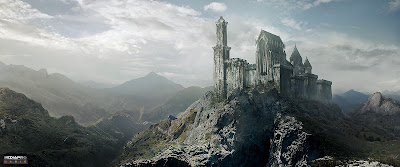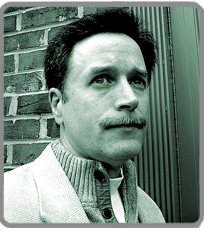
Michael J. Sullivan is the author of the fantasy novels
“The Crown Conspiracy” and
“Avempartha” (both reviewed
here on my
blog), the first two novels in
The Riyiria Revelations series. Michael’s series is scheduled for a total of six novels with the next one,
“Nyphron Rising” due to be released in October.
 Mihai (Dark Wolf): Michael, thank you very much for this interview.
Mihai (Dark Wolf): Michael, thank you very much for this interview.When was the moment when you decided to pick up the pen and start writing?
Michael Sullivan: Monday, March 18th, 1974…3:38 pm est. Sorry, I couldn’t resist. I can’t put that precise a point on when I started writing, but it was around there, give or take a month. I had just finished reading The Hobbit and The Lord of the Rings—the first book I ever enjoyed. I wanted the story to keep going so finding my sister’s old manual typewriter, I picked up where Tolkien left off. I got about twenty pages into it (complete with title pages, contents and a cover I illustrated) when I realized adding on to Tolkien’s world wasn’t a good idea. I should create my own story.
I began with a series of very small (pamphlet-length) stories about creatures I invented called Fibbits. Then I retired them and began what would become a trilogy that would foreshadow the Riyria Revelations, about a skilled warrior and his partner turned rogue who become embroiled in a conspiracy and then a war.
As I grew older I set aside fantasy and began writing “what if” stories. What if you had the power to do anything? What if you found an alien spaceship buried in your back yard that still worked? What if Gargoyles were real?
Once my wife finished college and landed a job that could support us, I stayed home to raise the kids and began to take writing seriously. I studied the classics and the Pulitzer Prize winners and learned from their style and started to teach myself techniques. I wrote thirteen complete novels and did a half-hearted attempt to submit a few of them to agents, and they were rejected. Those original works were read by only one or two people before being lost in the attic. After ten years, I watched my friends move on with their careers while I sat like Linus in the pumpkin patch. I gave up and was sick of both writing and reading. I revived my old career as a graphic designer and soon opened my own successful advertising agency.
Ten years later, my daughter was having troubles reading. She didn’t like it. In an effort to get her interested in books, I purchased this new novel called Harry Potter. I read it myself and rediscovered the magic that I had found in Tolkien. I was inspired to write once more. I set aside hopes of publishing the great American novel and decided to simply write something fun, something with great characters and a good story, the kind of book I would like to read.
That story started with two thieves stealing a sword only to find a dead king where the sword should be, and so began the Riyria Revelations.
Mihai (Dark Wolf): Why are you attracted by the fantasy genre and what inclined the balance towards this genre as a start in your writing career? What inspired the creation of your fantasy world, Elan?
Michael Sullivan: Initially I chose to write fantasy because of Tolkien. It was the second book I ever read and the first I ever liked. I returned to fantasy because I wanted to write something fun. I wanted to enjoy the writing process and I didn’t want to get bogged down with a lot of research. I remember writing a story that had a brief scene in the backseat of a police car and had no idea how to describe it. I’d never been in the backseat of a police car. This was back before the Internet and the nearest library was two hours away. I also didn’t want to bother police officers for an incidental scene in a book.
By writing in a made-up world, I could avoid all that. It limited my ability to use common experience, but as long as I stayed consistent, I could never be wrong.
Mihai (Dark Wolf): How do you try to avoid the clichés of fantasy works? Do you find yourself sometimes in your writings using some of these clichés?
Michael Sullivan: I assume by cliché you are referring here to the broader plot concepts, the idea of “a youth destined to save the world from the terror of some dark lord” kind of thing, rather than the descriptive, “raining like cats and dogs” kind of cliché. With that assumptions let me continue.
When Star Wars first came out, I read a review in the local paper. It said that the movie was a collection of clichés from old films. This more than anything convinced me to go see it the first weekend it debuted. This was in 1977 and most films at that time were depressing, realistic movies that reveled in how they were different from the old clichéd westerns and heroic adventures. I hated the new movies where the bad guys won, or there was no good or bad, just confusion.
I like clichés—or put another way—I like the classic themes, that never get old. The trick is presenting them in a fresh way. Vampires were an exhausted topic when Stephen King wrote Salem’s Lot, and while he didn’t really change anything in the vampire canon, he brought a fresh viewpoint to the old idea. Clichés are only bad if that’s all there is to a story.
I personally believe there is so much that can still be done within the old classic heroic adventure tale. How I approached my books was to think small. Too often fantasy writers want to create a big story; the world always has to be at stake. Justifying this often leads to the same place—the same rut. The story often becomes too big and unwieldy. I decided at the start to begin my series with just a simple theft that goes bad. The world isn’t at stake, there’s no ancient evil, no prophesy. Sure there is your classic, save the kingdom theme and a bit of the youth coming of age, but it is all kept on a much smaller scale allowing me to better develop the characters and a more eventful story that is easy to follow but hard to anticipate.
I’m not certain if it is possible to write a completely original idea, however, there are an infinite number of ways to combine and rearrange existing ideas to produce the equivalent of a new concept. There is nothing terribly new about any of the basic elements of the Riyria Revelations. Thieves, wizards, elves and dwarves have all been used, but never the way I use them. In this manner, my books are unique.
I also stray from the norm in several other ways.
The form I use to present my story appears, (judging from the reviews,) to be shockingly original. I unfold my story over six books, which means the characters develop, and are revealed slowly over the full length of the series. People were sometimes confused when they don’t know everything there is to know about the main characters or the world in general after the first novel. Now that the second book is out, I can see readers are starting to understand how this system works and many find it refreshing commenting that, “In real life you don’t get to know everything there is to know about a person upon first meeting either.”
I avoid the long-winded, archaic sounding language so prevalent in modern medieval fantasy as to be considered required. I prefer to present the world as if the reader was a native to it. The language should be familiar rather than alien sounding. I think this helps to both immerse the reader as if they were part of the story and reduce the reading difficulty to make the story more accessible and fun. In this same vein, I try to keep my names simple and easy to pronounce.
I reduce the wall-of-information so often encountered at the start of many fantasy epics that concentrate on world-building that often reads like a history textbook with dozens of strange names and sometimes even dates. There have been a number of books whose walls were so dense I was prevented from reaching the story within. My solution is to provide the story and characters first and let the world unfold along the way. If I do my job right, the reader will know all they need to about the world without ever remembering when they learned it. Fantasy reading should be fun, not a chore.
And let’s not forget that the books are normal length, the kind the average person can finish in a week and evaluate, rather than a daunting thousand page tome that requires a huge investment of time just to get to the good parts.
So to answer your question, I don’t avoid cliché’s, I use them to my advantage. I just use them in new, never before seen, ways.
M(DW): Who are your favorite authors and works? Did any of these authors influence your writing?
MS: As I mentioned I “studied” various writers and their techniques absorbing them keeping what I liked and throwing away what I didn’t. I learned plotting from Tolkien. Setting from Steinbeck. Brevity from Hemmingway. Characterization from King. Fun from Rowlings. Trusting the reader from Hosseini. Character descriptions from Rand.
M(DW): Your novels are published by independent publishing houses. Did you try at first with the small publishing houses or with the major ones? What were the reasons for the refusals received?
MS: I assume you are referring to the present Riyria series here and not my ten years of dismal failure. I had an agent for The Crown Conspiracy who sent my book to the standard fantasy publishers. I was not given the reason for denial. It is likely that the book just wasn’t good enough. Although I’ll admit the version that was finally published is much improved from the manuscript my agent had to work with. After my agent retired for personal reasons, I re-worked the book adding chapters and cutting others and had it professionally edited before sending it to the smaller houses where it was picked up. It is possible that I might have landed a bigger publisher with the new re-vamped version, but I never tried.
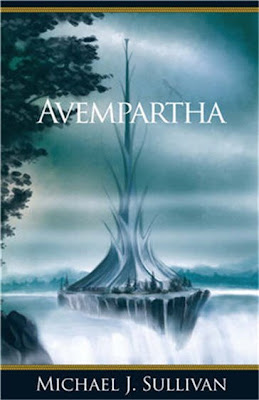 M(DW): Still, your novels get a lot of positive vibe around the Internet. Do you hope that this will attract the attention of major publishers? Do you hope to sell the publication rights to a bigger publisher in the future?
M(DW): Still, your novels get a lot of positive vibe around the Internet. Do you hope that this will attract the attention of major publishers? Do you hope to sell the publication rights to a bigger publisher in the future?MS: Honestly, I’m not looking for a bigger publisher. I’m pretty independent by nature. What many outside the publishing world don’t realize is just how little say over their books the authors have...title, cover design, back of the book blurb, inside formatting, price, distribution channel, release schedule, is all controlled contractually by the publisher. When working with small presses (if you know what you are doing and ask for things that make good “business sense”) you have an opportunity to influence these things…contractually you still may not have any say but they are more willing to listen. You have no such sway “with the big boys”. When AMI sent me the original cover design for The Crown Conspiracy I was “less than pleased”. So I did a cover myself and convinced them to use it. When it came time for book two the publisher wanted to change the title of Avempartha. Again, with some sound reasoning I was able to keep the title I wanted.
For some, they equate the worth of their work by the size of the publisher, I’m not perusing that avenue so I don’t feel “diminished” in anyway . My wife has suggested sending the yet to be published works to places like Tor and I’ve resisted because I think it would present a whole different set of problems – especially to my publishing timetable which I’m pretty adamant about. I’ve often chided that I would like the contract only to turn it down. I’ve been published through a legitimate publisher, so I have credibility that says someone who knows about the book industry thought my work was good enough to invest thousands of dollars on it. I would rather keep control rather than have the perceived prestige of saying I’m published by a big company.
There is no doubt that being with a major publisher helps with distribution, but that too is a double edge sword. If your book gets buy-in but not sell-through they will pull it and sometimes in just a few short months. (Buy-in means a place on the shelf in bookstores – sell-through means someone walks out the store with it). The larger publishers “buy” shelf space and it is expensive and very cut-throat so if your book from a big publisher isn’t moving it can quickly be replaced by another. The returnable factor is also a huge potential danger. Books are one of the few pieces of merchandise that are 100% returnable to the manufacturer so having thousands of copies on shelves in bookstores is actually a big risk to a publisher. If the bookstore is having cash-flow problems they just ship back slow moving stock before their bill for it “comes due.” This can be devastating especially for new authors that no one knows about.
In contrast, smaller presses are more likely to give books time to grow and discover an audience. They work with longer timetables. They make the books available to be ordered through stores but don’t purchase shelf space. Any books on the shelf are due to demand therefore the risk of returns is lessened. They are more willing to roll the dice on a new author and love authors with multiple titles as cross-selling is huge to their bottom line. They see significant sales spikes of early books with each subsequent release so series are a “sweet spot” for them. The biggest concern I have at the moment is ensuring the entire tale is released. My books are self-contained but the real “bang” of the series will be when the last one completes a tale that evolves over a longer story arc. To be honest I feel more comfortable with the sales model of the smaller press when it comes to a six-book series the risk is much less than with a large house that all the books will actually see the light of day. The fact is, if my books are good they will sell, and if they sell they will be in every bookstore. If on the other hand my books are crap, then I shouldn’t be on the bookstore shelves.
Whether published through a large firm or a small press the deciding factor in both cases is the reader and their all-powerful word-of-mouth. If people like my books and tell others about them, that’s better than any advertisement in the world. That’s what makes an unknown author successful. I’ve been very fortunate that so many people, like yourself, have gone out of their way to promote my books either by suggesting them at their book clubs, asking local libraries to stock them, posting reviews on places like Amazon and GoodReads, or just telling their friends and family to get them.
I heard from a mother of a ten year old girl who read her copy and then went to school and told her class how great my books were. When the teacher asked to borrow the books so she could read them, the girl replied, “You should get your own copies.” And then provided her with my website address. Even the biggest publisher can’t buy that kind of publicity.
M(DW): Speaking of the positive vibe, from your book tours, conventions and on-line reactions how do you think that your novels were received? How was the interaction with the readers on the book tours and conventions?
MS: My first book has only been published for nine months. It feels like a lot longer, but really it hasn’t been long at all. Almost no one knows me. At most conventions we (my wife and I) spend time trying to convince people to “take a chance”. When they buy it’s usually due to my wife’s enthusiasm or because they like the covers. The few people who have read one of the books are easy to spot. They come straight over while pulling their wallet out – you can tell immediately they are already familiar and no convincing is necessary. That of course makes me think I’m doing something right.
A few weeks or months after a convention or signing I get the emails. They always start out the same… “I was really surprised…” and then they go about how much they liked the book. You can tell that ninety percent of them didn’t expect much. While I’m ecstatic they liked the book, I’m not happy with the obviously low expectations.
The better emails are from people who come across the book online either by seeing a review, or hearing about it from someone else. These are the ones that mention the book exceeding high expectations. That will keep me on a “high” for weeks. To date I’ve not received a single email that has been anything other than complimentary. Now, I’m not egotistical enough to think there are no people out there that don’t like the books, but so far no one has hated it enough to bother to write to me personally. Because they are always so positive I love getting email from readers and encourage readers to write any author that they find enjoyable. I don’t think people “outside” the business really know how tough publishing is. Almost all writers are solitary but they write to connect with others so hearing that someone liked their books really makes the long nights and low pay (most writers don’t make a “living wage”) worth while.
One of my favorite places to get feedback from is book clubs. So far everyone of them that had The Crown Conspiracy for their monthly read have immediately picked up Avempartha when it was released – there are even a number of them that have already picked dates for Nyphron Rising so again keeping to my release schedule is pretty important. It is the face-to-face interactive nature of this forum that makes it so worthwhile. Again everyone is very complimentary, but I sometimes wish I got “dinged” more if only to know they were not “just being nice”. But when the end comes and they start enthusiastically asking about the release date of the next book. Again I gain confidence that they are indeed enjoying the series.
The last bit of “reader” feedback is reviews on Amazon and book sites such as GoodReads. Again the results there have been very complimentary so much so that a few people have questioned if they are all from friends and family. This makes me laugh as the “solitary” thing comes into play again and I don’t know that many people. In fact of all the posted reviews only 2 or 3 of them have been from people I know. I will say that when I come across someone through an email or at a book club who says they like the book I do ask them to be honest. Again, for a new author it’s all about creditability so I’d rather have 50 reviews some positive and negative than 2 positive reviews.
The last feedback point is the bloggers and I have to say this is the thing that truly blows me away. Their opinions carry a lot of weight with me because they read a lot (and many established authors in the genre) so when they say the books are enjoyable I definitely feel that whole credibility thing coming into play. I consider myself very fortunate that this series is hitting a good note with this audience. I think all authors are looking for that Sally Fields moment…. “You like me, you really really like me.” if for no other reason than to think they have some amount of talent and that they are not just deluding themselves into “thinking” they are a good writer.
So, so far so good. Around three hundred people have posted reviews of my novels in one way or another and many more have sent me personal emails. Some unequivocally love it. Most find some little thing they didn’t care for, but really liked them just the same. Only a handful of people have said they did not care for them. I’ve actually acquired a few ardent fans who I think might break my legs if I fail to put out the next installment in the series on time…again that timeline thing coming into play.
M(DW): Besides writing the novels you also made the illustrations for your book covers. Was it easier for you to choose a representative image for your novel? Why weren’t you satisfied with the initial illustration proposed by the editor?
MS: Before turning to writing I was an illustrator who dreamed of being a book cover artist. I went on to be the Creative Director and Chief Designer of my own advertising agency. I’ve won awards. So I’m very good at designing things like covers and book layout. Where most authors might be very pleased with the proposed designs, I can be very particular and suffer from the knowledge that I could do better.
I have certain preferences about covers. In general, I don’t like depicting the characters as I like the reader to form their own impressions of what people look like. I also think that some of the “standard” covers used in this genre tend to kind of blend together over time and it makes it difficult for any of them to stand out.
From my advertising experience I know that it is important to make the books appear “coordinated” and part of a bigger whole. I also use color scheme to set a tone for the books – again too often the covers have every color under the rainbow in them and fonts that tend, in my mind, to cheapen them.
The proposed sketch for Crown, while based off my own idea, suggested that the artist was having trouble. It wasn’t a matter of concept but one of execution. The river looked like a road with sharp corners. Fearful of being stuck with a hideous image I painted my own and sent it to AMI. The bottom line was the cover I produced was better than the ones being worked on by their standard cover artists so they contracted me to do them.
As far as scenes for the other covers there was no question what I wanted for Avempartha – it should be the elven tower that is the main setting of the book. The trick was whether I could “pull it off”. My first few attempts did not have the grace I wanted. I just kept at it and refining it further and further until I got what I think is a good representation. All in all I’m happy with the way the covers turned out and I get a lot of compliments on them so that tells me something as well.
M(DW): How important do you consider to be the collaboration between the author, editor and artist in the process of making a good cover illustration?
MS: It all comes down to what the editor is doing for you. At the large presses, the editor plays a much bigger role. Another reason I’m shying away from the large publishers. They can request wholesale changes on everything from plot to pacing and many times the writers initial vision is changed, sometimes for the good, other times the results can be disastrous, particularly when new authors don’t trust their own instincts. I would rather have a book that is “mine” that is bad than one that has been altered to please some marketing focus and therefore sells more.
At the smaller presses the editors are just tightening sentences, checking grammar and spelling. They really are not doing anything to change the story line as a whole. For authors at small presses, this can be a problem because almost all books need to have someone other than the author put them through their paces – to be critical when the book is running too fast or too slow, point out dialog that does not ring true, and find plot holes that someone could drive a truck through. I’m fortunate in that this role is played by my wife, Robin. She is a fan of the series and understands what I’m trying to do so we are very much “on the same page” (no pun intended). We are one of those obnoxious couples who have been together for 30 years and finish each other sentences it is easy for us to debate items of contention because she doesn’t have to “pull any punches” or try to stroke my ego. Many times we disagree, some changes I’ve made, some I haven’t but all in all she really puts them through the ringer – for Nyphron Rising (book 3) I’ve added three chapters it was painful to do but after she made her case I can see it was worth it.
As for artists, in my opinion they need to serve two masters. They have to satisfy the author while at the same time creating the most appealing cover possible for the “business side”. I’ve actually created covers for other authors. I’ve painted beautiful images only to have the author explain that this, or that, was inaccurate. I then re-worked the idea. Sometimes I did not feel the result was as good as the first, but I certainly understood their points and reasons so I made the changes. Ultimately, both the author and the artist have to listen to the marketer in order to create the most effective selling tool, because that is really what the cover is. This is why authors rarely have any input on covers – it is first and foremost a business decision. As it happens, I am a professional in all three of these areas so I have an advantage.
M(DW): You owned for almost 10 years an advertising company. Did this fact help you create an illustration with a marketing impact? Did your experience in advertising help you promote your books?
MS: Absolutely. I happen to really dislike most of the fantasy book covers on the market. Most of them look childish presenting cartoonish images of characters. This is the result of marketing research that states that in the US characters on the cover sell better, (in Britain, they prefer landscapes.) What has resulted is a forest of books that all look alike. The first rule of marketing is to stand out—hopefully in a good way. My books therefore don’t look like the rest. They are simple, subtle, even tranquil landscapes of places central to the story. I also branded the series by deciding early on to present each in a separate color scheme. I had hoped to match the colors to the season the story takes place in, but I’m not certain I can do that. So far, everyone I’ve spoken to love the covers. They are standing out, and in a good way.
 M(DW): Your wife helps you and does an amazing job in the promotion of your novels. Does the fact that you are helped by someone very close to you leads to a better planned publicity strategy? Does it bring you more comfort and confidence?
M(DW): Your wife helps you and does an amazing job in the promotion of your novels. Does the fact that you are helped by someone very close to you leads to a better planned publicity strategy? Does it bring you more comfort and confidence?MS: In our relationship, I am the dreamer and Robin is the one who makes my dreams come true. When I wanted to move to rural Vermont, she found a way to make a living in a place few can so we could move there. When I decided to create an advertising agency, she was the one who established the business and brought in the clients. When I decided to be an author, she is the one who got me published. Now she is the one out there promoting my books. And she’s good at it—very good. I think her secret weapon is that she truly loves the books.
She is one of two people in existence to have read the whole series. She—like others—found the first few books to be fun, escapist entertainment. When she got to the last few she became riveted, and when she read the last book in the series, she was blown away, concluding this was the best thing she’d ever read. For her, this is a crusade to bring a wondrous treasure to the world. That enthusiasm comes through when she speaks to people, and that makes all the difference.
As to strategy, and having confidence…I think most authors are clueless when it comes to promotion and don’t know what a marketing plan is let alone how to come up with one. They know how to write books, and are for the most part timid about blowing their own horn or doing anything promotional. There is no question I’m fortunate to have someone willing to take on this part of the business, as it is essential to success. Robin actually works with a lot of authors, she is always trying to help people new to the industry avoid pitfalls and scams. I’m always having to remind others – they can’t have her … she is mine!
M(DW): The Riyria Revelations is a planned 6 novels series. Being planned for 6 volumes is your series already finished or there is still room for changes?
MS: The series is done. Nothing will change the story. As I’ve mentioned a few times the whole series was actually written before the first book was released. This was essential as there are subtle threads that run through the story arc. There are small mentions of things in early books that will have no real significance until much later. It is very much like “The Sixth Sense” in that when you get to the end you will really want to go back to the beginning to verify if everything really does fit into place. Sometimes it may seem that something is “coincidental” or obvious but several books later you’ll learn that there were other forces putting things into motion and it all makes sense. There is no way I could do this by writing them one at a time. The book took me in unexpected directions as it unfolded and the ability to go back and add an Easter egg to book one or book two won’t make or break the series but it is a nice little surprise that I couldn’t have had otherwise.
That being said, each book does go through rework before release. I do make minor changes insofar as adding a new chapter or cutting sections as Robin and I edit it, but that is merely to improve the existing story. As I mentioned Robin is very good at finding plot holes, dull spots or areas where more is needed. This really improves the books, but doesn’t fundamentally change them.
M(DW): Each novel can be taken as a standalone too, but each one of them builds a wider story. Is the story built until the last volume? Is the highest climax reached in the last novel of the series?
MS: Each book in the series follows the traditional story arch in that they all have their own beginning, middle, and end, complete with climax followed by a resolution. The series as a whole does the same thing. The first three books are just letting you get to know the characters and the setting, along the way the real story begins to pick up and I believe that they do get better with each one. While I try very hard to avoid cliffhanger endings, and make the conclusion to each novels satisfying in themselves, I do plant seeds that make the reader anxious for the next one and I think that pressure will increase with each volume. I’ve said throughout this interview that the release schedule is important to me. I don’t want to have the readers waiting years between releases. Six-months is a break-neck pace even with a fully written series and as we near books five and six I think yes the intensity does build and I suspect readers will be very glad for the adherence to the production schedule. For by then, the story will be racing at a rather riveting pace. And while, like a good father, I feel all my books are good, I must say that book six—the final book—is amazing. When I finished it, I knew I had done something great. So far, those two people who read it agree. Book six should actually transform the first five books in the minds of readers. What they thought was just a series of fun adventures will be revealed as far more profound and moving.
M(DW): Do you plan sometime in the future to return with a story in the world of Elan? Would you like to use the characters of Hadrian and Royce in others novels too?
MS: I know my wife wishes I would. Her greatest regret is that she can’t forget what she already knows so she can read it all again for the first time.
If I wanted to, I could write several related books, or series. I could write the ancient story of Novron—quite a lengthy and interesting tale in itself. I could write the story of Esrahaddon (although you will get quite a bit of that before the end of this series.) There could be many tales of Royce and Hadrian in “the early years”. And of course I could write what happens after the series. I did in fact, leave one secret thread in the series to allow me to write another set based off the first. I am certain it will be imperceptible to any but the most ardent readers. Still if I wanted to, I could pull on that thread and build another story out of it. At this time however, I do not intend to do that. Yet, should Royce, Hadrian and the world of Elan become as big as Harry Potter, or Middle Earth, I suppose I might consider it.
M(DW): What do you plan to write next after finishing “The Riyria Revelations”?
MS: I’ve worked a bit on a novel called Antithesis. It is a standalone novel, not a medieval fantasy and nothing like the Riyria books. It is set in modern times but does have a bit of “magic” in it. I actually wrote it long ago when there really wasn’t much in the realm of contemporary fantasy. I realize that most authors find a style and a niche and stay there, but to me that is like seeking to be a stereotyped actor. I happen to be capable of writing in a variety of styles and choose which style to use based on the kind of novel I am writing. It is possible that I will upset fans wanting more of the same, but I suppose it is also possible that I could develop fans in other genres that might then cross over. As it turns out, some of my most zealous fans have been those who never have, nor ever expected to read a fantasy book. Others are those who absolutely dislike fantasy, so that might not be so far-fetched.
Thank you very much for your amiability and answers.


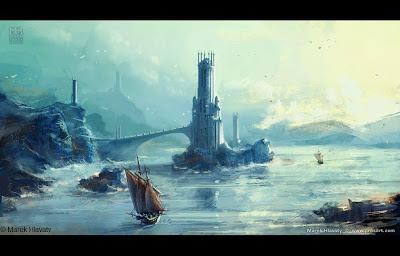


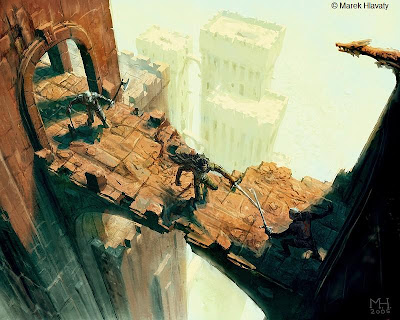
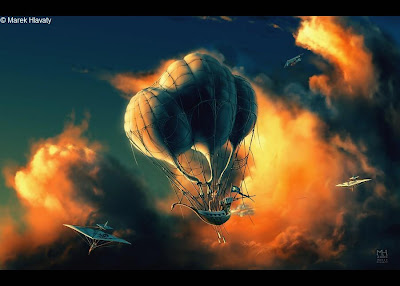
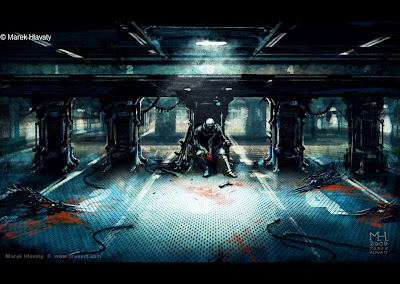
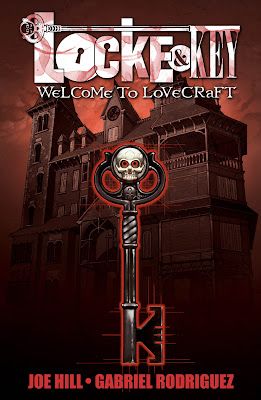
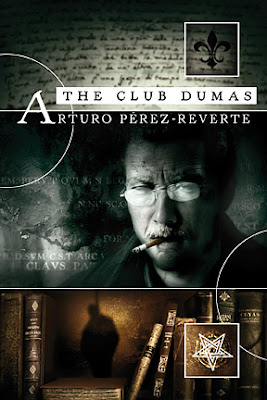

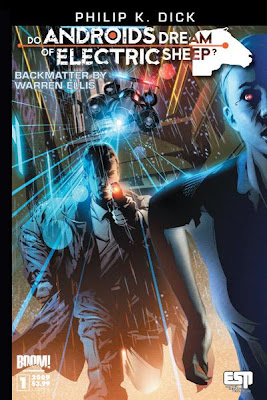
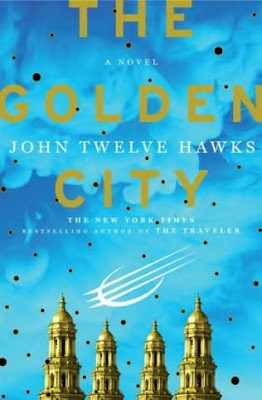






 M(DW): Your wife helps you and does an amazing job in the promotion of your novels. Does the fact that you are helped by someone very close to you leads to a better planned publicity strategy? Does it bring you more comfort and confidence?
M(DW): Your wife helps you and does an amazing job in the promotion of your novels. Does the fact that you are helped by someone very close to you leads to a better planned publicity strategy? Does it bring you more comfort and confidence?


